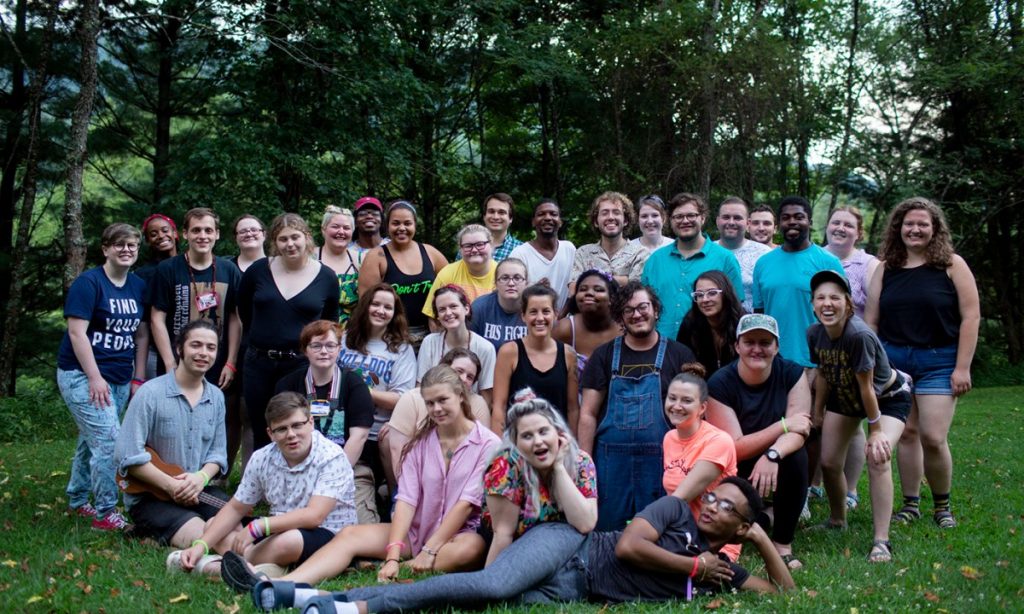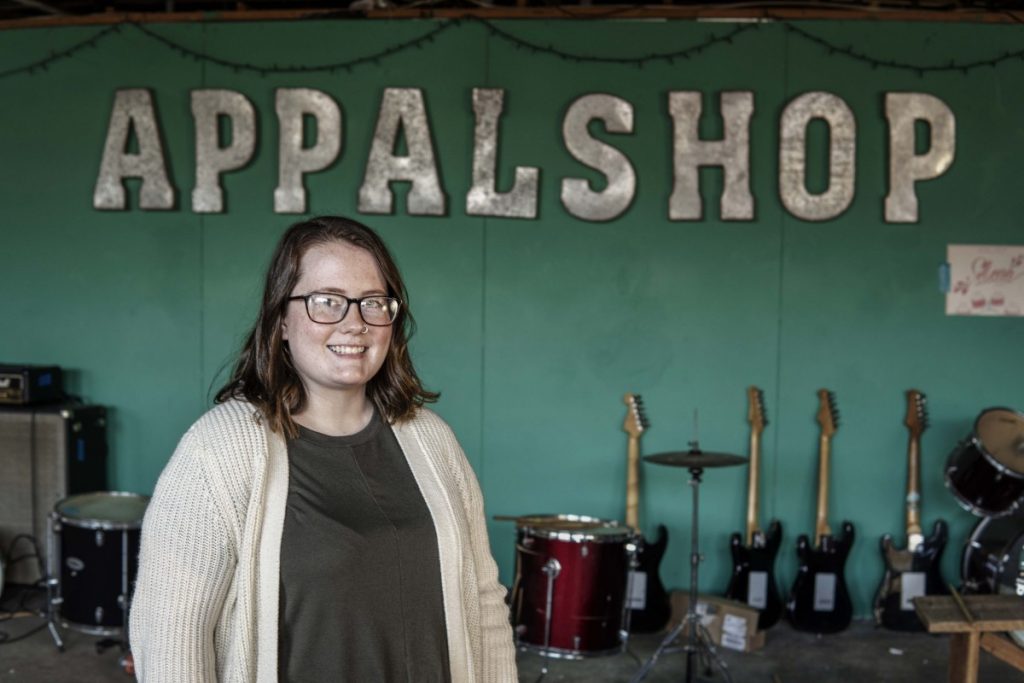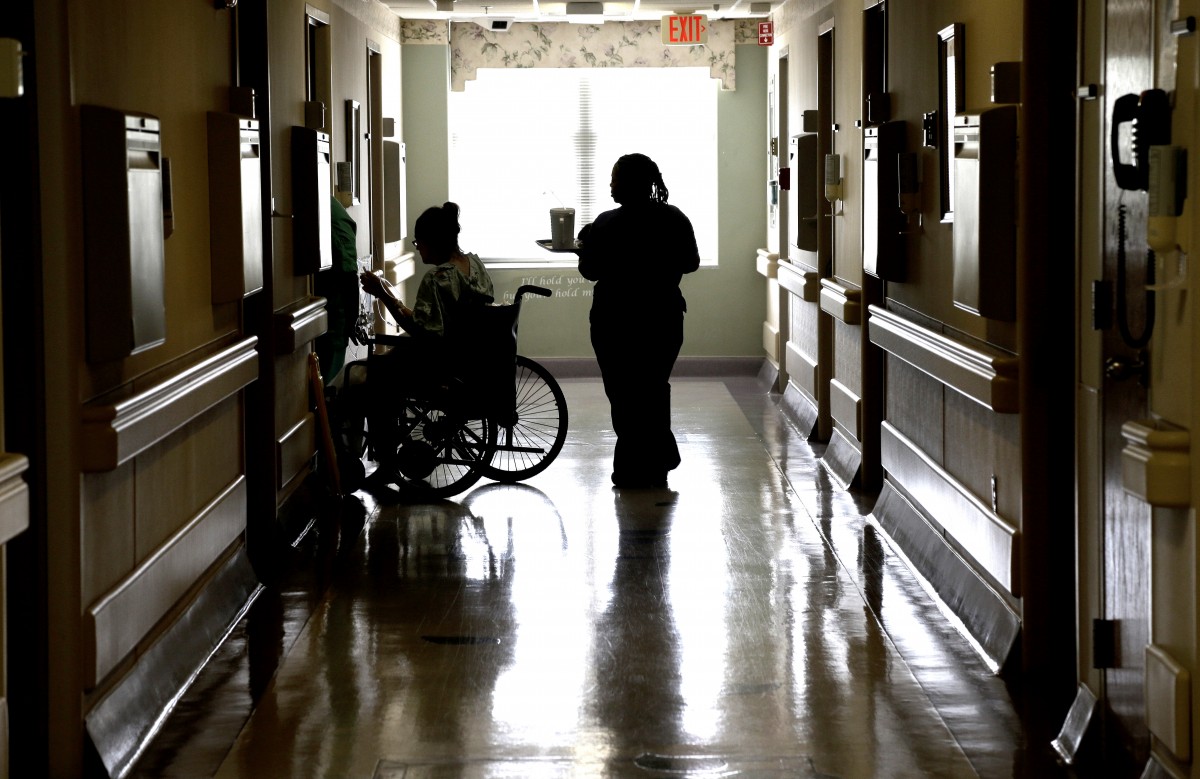For her senior year of college, Hannah Adams is staying home. Although Morehead State University in Morehead, Kentucky, is open, the COVID-19 pandemic has changed life on campus.
“Meals are all takeout. Student groups can’t meet. I felt like I’d be more isolated there than if I stayed home,” Adams says.
Home is Letcher County, Kentucky, an almost three hour drive from Morehead State. It’s a rural community, and staying there feels safe to Adams in the midst of a global pandemic. “Rural people typically live a pretty isolated life anyway,” she says. “It’s usually seen as a negative thing, but now it’s positive because of the pandemic. We have fewer cases.”

The grocery store and neighbor’s front door are further away in a rural area. In some ways, rural life has the space for social distancing already built into it.
College-aged students and recent graduates throughout Appalachia are navigating social distancing, school pandemic guidelines, living with family and the prospect of graduating into a recession that has complicated their plans to stay in the region, even during a time when there are not a lot of options to leave. Many have found that the connections they were building or the ones they’ve depended on aren’t as readily available as they were pre-pandemic. Isolation is good for not catching COVID-19, but it’s lonely when you’re struggling to stay in an area with fewer economic prospects and direct opposition to the work to which you’re committed.
Sav Miles is committed to their social justice work in Gadsden, Alabama, even though it has cost them a job and a fiscal sponsor for a grant-funded project that develops community based in the values of Christianity, mutual aid and equity.
Miles graduated from Harvard University in 2018, and promptly moved back to their hometown. They’ve been organizing on behalf of Alabama Sustainable Agriculture Network, an organization of farmers, consumers and organizers who promote sustainable agriculture projects across the state, as well as racial justice movements coming out of national Black Lives Matter organizing.
“It means a lot to the community and to me personally,” Miles says. They were really excited about a Gates Foundation grant they’d received to run a program organizing Christians for racial and economic justice. “My hometown experience of poverty and people’s struggles had me thinking, ‘What does it take to change that?’ I moved home to do that work.”
But that work has been hard without financial and, often, community support. The local YMCA was Miles’ fiscal sponsor for the Gates Foundation grant they received in June to run the Community Protectors Project. After losing a few memberships from individuals who opposed Miles’ work, the YMCA severed their relationship with the project. “There’s been a lot of criticism and people who want to see the program fail,” Miles says.

Even in the days before the pandemic, the struggle to stay took a toll. “There are a lot of reminders of what made things difficult about being here,” Miles says.
That’s why Miles felt so lucky to find The STAY Project.
The STAY Project is a network of young people throughout Appalachia that work together to create and advocate for sustainable, inclusive communities throughout the region. The organization defines “young” as anyone in the age range of 14 to 30 years old, and it offers a Summer Institute and regular convenings, like the one that was carefully planned to meet COVID-19 safety protocols that Miles was attending after learning they’re fiscal sponsorship agreement had been terminated.
Miles is on the steering committee for the STAY Project and says the retreats are often a lifeline for young activists and organizers who are trying to stay in Appalachia but often need support from people outside their respective towns and are looking to spend time with like-minded others who share their values.
“We always say it’s lifegiving in STAY,” Miles says. The pandemic has changed those gatherings, though. “The number of people and the intensity of those gatherings have decreased this year. It sucks.”
All of the convenings have been complicated by COVID-19. Usually, meetings are held in-person somewhere personal, like a member’s home or a rented cabin where STAY participants spend time working together in close proximity, helping form stronger bonds. But in July, their annual institute was instead held online and in September, the steering committee held a socially distanced camping trip with masks and individually cooked meals.
“It’s been incredible to be a part of a local movement, but it’s a breath of fresh air to go away and be a part of STAY,” Miles says. “The distinction for me is being able to go somewhere where the criticism is quieted.”
The strain of the changed format is showing across several organizations and initiatives designed to support youth in the region.
Nina Morgan is an organizer with Greater Birmingham Alliance to Stop Pollution. She is also a member of The STAY Project’s steering committee and works with Magic City Youth Initiative, a network of 14 to 30-year-old residents of Birmingham who work together to create a better future for the city rooted in equity and social justice. When she started working with Magic City Youth Alliance, there were nine people on the committee. Now, because of COVID-19, there are three.
“It’s hard to stay connected during COVID,” she says. “We tried virtual steering committee calls. Young people are not as interested in being on Zoom calls.” They used to go on hikes. “That’s how we stayed connected,” she says. “The [initiative] shifted from being a place of political action to being a place of survival.”
Mekyah Davis, co-coordinator for The STAY Project, sees the struggle in steering committee members and the larger population of youth throughout the region. “Young people are hurting right now,” he says. “They’re back home in caretaking positions with no government resources or funds. They work in service jobs and put themselves at unnecessary risk just to sustain themselves and their families.”

The job market was slim before, but in a pandemic-exacerbated recession, the outlook is even more grim, Davis says.
“It’s terrifying to be graduating into a pandemic and entering the workforce with the current state of the country,” says Adams, the Morehead State University senior who decided to stay in Letcher County for her last semester. Adams has had to adjust her last year of college, but several freshmen are making alterations to their first.
In Scioto County, Ohio, you can find billboards and banners that display the Shawnee State University logo and the message, “Stay home and go far.” The campaign started because 50 percent of the student population comes from the immediate region.
“It took on a different meaning in the pandemic,” says Elizabeth Blevins, who serves as Director of Communications at the university. “A lot of students are postponing plans. A lot of them who postponed in the Fall will rollover their applications to the Spring.” The university is treating the spring semester just as they would the fall for those students, allowing those who received scholarships or financial aid to defer for a January start.
“There’s a lot of uncertainty in a pandemic,” says Blevins. “A lot of students anticipated a delay until things settled down.”
The spring semester may not be more settled, but it will offer hybrid options and safety precautions at Shawnee State. Like the students, the college has worked to adapt by allowing some students to postpone their enrollment while creating both digital and in-person learning experiences for others.

The adaptations are necessary, but not without strain. Yet, there is hope to be found in the ways young Appalachians are amending situations. Maybe it’s less adaptation and more transformation.
As Davis sees it, “Young organizers are rising up in their communities and we’re seeing them step into their power.”
Amanda Page is a freelance journalist from southern Ohio. Follow her on Twitter @amandadashpage.



